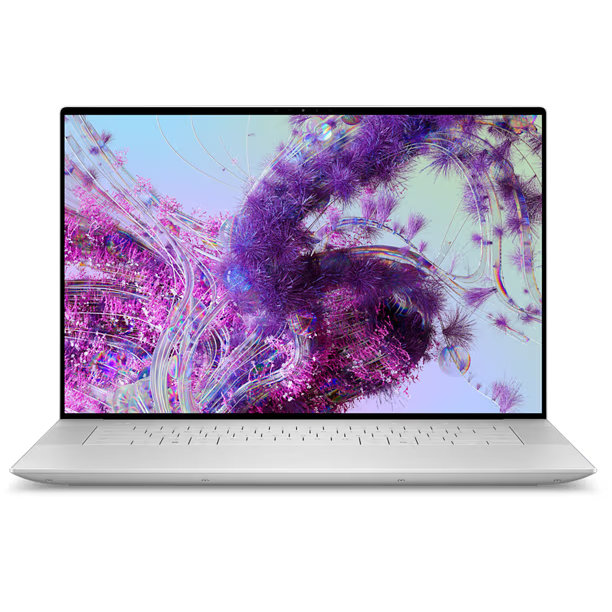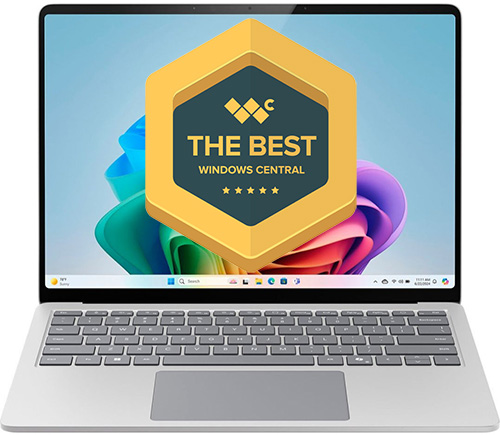Best laptops with bright screens in 2025: Ideal for outdoor use, tested and ranked
These high-scoring laptops have some of the brightest screens on the market.
A laptop is designed for use anywhere, but working outdoors with a dim screen can be troublesome. That's where these great laptops with screen brightness well beyond the common 300 nits excel.
Lenovo's Yoga Slim 7x (Gen 9) is my top overall choice for most users. It received a full five stars and a Windows Central Best Award thanks to its exceptional design, all-day battery life, and strong performance.
Not quite what you need? I've taken into account hundreds of hours of testing and 30 laptops recently reviewed at Windows Central to come up with five great alternatives, as well as some honorable mentions.
Recent updates
April 14, 2025: I've added the awesome Lenovo Yoga Slim 9i 14 (Gen 10) as a 4K option, moving the Panasonic Toughbook into an Honorable Mention position. — Cale Hunt
The quick list

Best overall
Lenovo's Yoga Slim 7x (Gen 9) is a Copilot+ PC powered by a Qualcomm Snapdragon X Elite chip, but it's the 3K OLED display with up to 1,000 nits of brightness that really stands out. It has a stunning design, and battery life goes all day.

Runner-up
Lenovo's Yoga Slim 9i (Gen 10) is one of the most impressive laptops recently tested at Windows Central. Its OLED display might not match the brightness of the Slim 7x, but it pushes the screen resolution to 4K and is otherwise stacked with high-end features and a gorgeous design.
Load the next products ↴

Best 2-in-1
If you opt for the high-end Snapdragon X Elite model, Microsoft delivers a gorgeous 120Hz OLED touchscreen measuring 550 nits in our testing. VESA DisplayHDR 600 pushes the potential even higher, and the Pro 11 shines in all other categories.
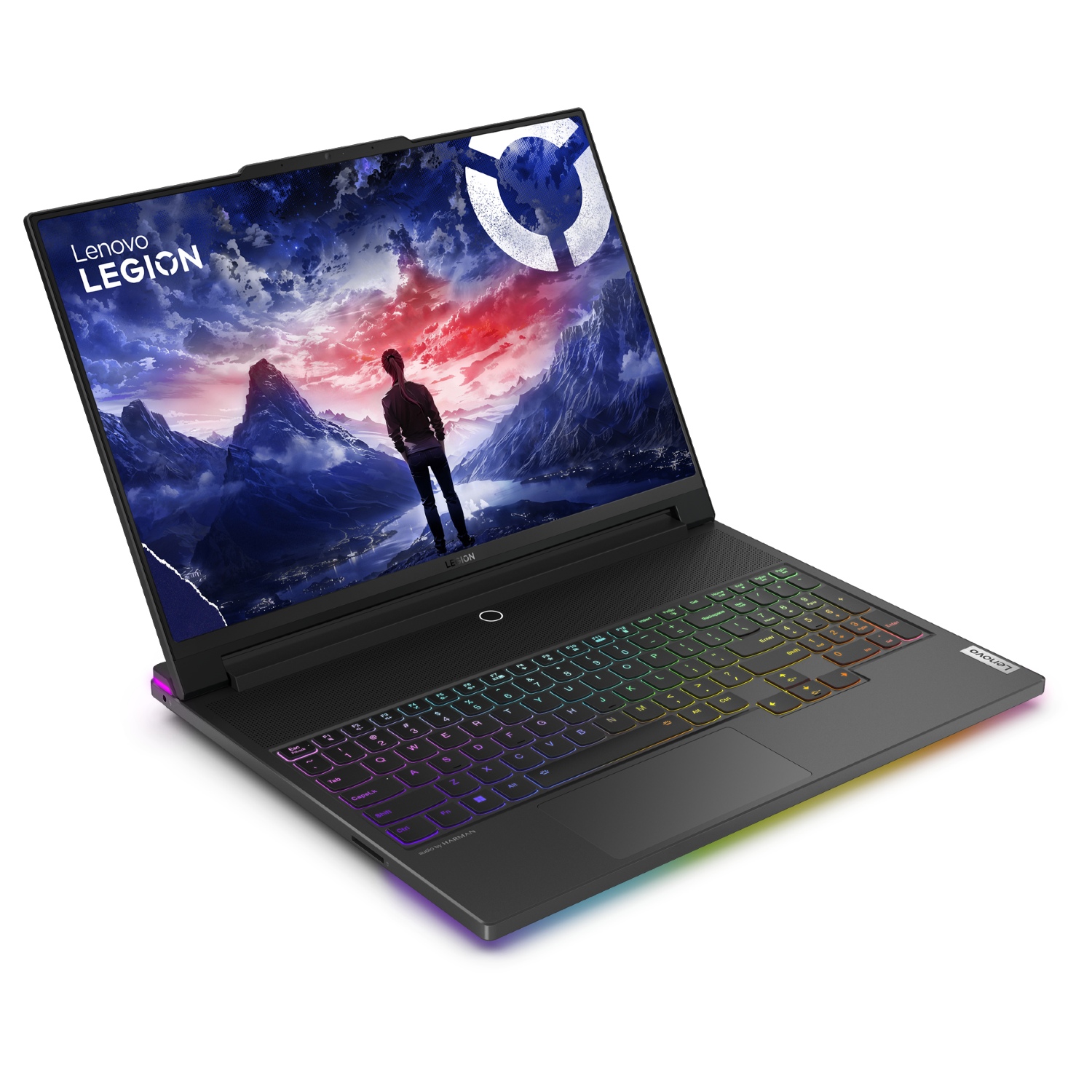
Best gaming
The Legion 9i (now Gen 9) is a monster gaming laptop designed for enthusiasts who want ultimate performance in a mobile package. Its 16-inch mini-LED display is capable of up to 1,200 nits brightness, and it has an anti-glare finish to boot.
The best laptops with bright screens in 2025
Why you can trust Windows Central
Best overall laptop with a bright screen


Specifications
Reasons to buy
Reasons to avoid
Lenovo definitely created one of the best Copilot+ PCs with this laptop, but its display with up to 1,000 nits brightness is what earns it a top spot in my list.
The screen measures 14.5 inches, and it has a 2944x1840 resolution, touch OLED panel, 90Hz refresh rate, Dolby Vision, and VESA DisplayHDR True Black 600 certification.
Windows Central's Zachary Boddy reviewed the Yoga Slim 7x (Gen 9), in which they stated:
"Everything looks crisp and smooth, blacks are deep and inky, colors are vibrant and striking; a mediocre display can make even the greatest laptop feel 'meh' to use, but there's no such concern here. This is a fantastic display at any price point, let alone at $1,200."
The laptop is powered by a Qualcomm Snapdragon X Elite (X1E-78) or X Plus (X1P-64) System-on-Chip (SoC), complete with an NPU that makes the grade for Copilot+ AI tools in Windows. Either chip contributes to true all-day battery life and snappy performance on or off AC power.
This laptop usually costs about $1,200 — with 16GB of RAM, 512GB SSD, and a 3K OLED touch display — but has been discounted frequently since its release.
👀 Read our full Lenovo Yoga Slim 7x (Gen 9) review
Runner-up laptop with a bright screen


Specifications
Reasons to buy
Reasons to avoid
Lenovo's Yoga Slim 9i 14 (Gen 10) might not have the brightest screen in this list, but it's too good a laptop not to include.
It has a 14-inch OLED touchscreen with a sharp 3840x2400 (UHD+) resolution, 60Hz or 120Hz refresh rate (no dynamic changing, unfortunately), Dolby Vision, and DisplayHDR True Black 600 certification.
While Lenovo claims the display can hit 600 nits with SDR and 750 nits with HDR, the former claim didn't quite measure up in our testing. It hit about 400 nits in our testing,
Windows Central's Zachary Boddy reviewed the Yoga Slim 9i 14 (Gen 10), remarking:
"A max brightness of 400 nits isn't blisteringly high, but the Yoga Slim 9i is competing with the best OLED laptop screens. Lenovo quotes 750 nits of peak brightness, which mostly applies to HDR content. However, there is an ambient light sensor that, while occasionally erratic, does help the Yoga Slim 9i battle bright environments and sunlight without your input."
The laptop sets the standard for modern design, with a slim chassis and an outstanding keyboard experience.
Just watch out for the webcam, which is embedded below the OLED display and doesn't impress with its picture quality.
👀 Read our full Lenovo Yoga Slim 9i 14 (Gen 10) review
Best designed laptop with a bright screen


Specifications
Reasons to buy
Reasons to avoid
Dell's latest XPS 16 (9640) might not have the best selection of ports, and its keyboard/touchpad design isn't for everyone, but it is undeniably one of the most futuristic-looking Windows laptops on the market today.
In her XPS 16 (9640) review, Windows Central Editor Rebecca Spear said:
"The XPS 16 will look good in both professional and casual environments. It feels like it is built to last with a solid chassis and smooth-moving hinge, making the lid easy to open or shut. I cannot tell you how much I love the soft feel of the material used around the keyboard."
The laptop can be configured with up to an Intel Core Ultra 9 185H CPU, NVIDIA RTX 4070 Laptop GPU, and plenty of RAM and storage. Dell offers a couple of 16.3-inch display options, ranging from FHD+ to UHD+ resolutions.
The high-res option has an OLED panel with an anti-reflective finish, which further helps it cut out glare. In our testing, we saw 410 nits of brightness. The OLED panel delivers 100% sRGB and DCI-P3 color reproduction, dropping to 89% in the AdobeRGB gamut.
This laptop has the lowest brightness of all featured in this specific collection, but the 400+ nits with an anti-reflective finish should nevertheless be the right combination for occasional outdoor work.
It's well worth noting that Dell has rebranded its entire portfolio of consumer and business laptops. The XPS name is now gone for future generations, making this laptop even more desirable as we wait to see what Dell's renamed PCs have to offer.
👀 Read our full Dell XPS 16 (9640) review
Best 2-in-1 laptop with a bright screen


Specifications
Reasons to buy
Reasons to avoid
Microsoft's Surface Pro 11 was officially announced as the world's first Copilot+ PC in May 2024, with a surprising price drop compared to the Surface Pro 8 and 9.
This 13-inch 2-in-1 starts at $999 if you opt for Qualcomm's 10-core Snapdragon X Plus processor and comes with 16GB of RAM, 256GB of upgradeable storage, and an LCD touchscreen. However, upgrading the CPU to a 12-core Snapdragon X Elite means you'll get an OLED screen with HDR600 support.
Editor-in-Chief Daniel Rubino delivered firm praise in his Surface Pro 11 review for all categories but highlighted the impressive 550 nits of measurable brightness while testing the OLED variant.
Compatible movies and games can hit a potential 900 nits with HDR and Dolby Vision enabled, and Microsoft bumped up color accuracy to 100% for sRGB, 88% for AdobeRGB, and 96% for DCI-P3 color gamuts, which helps creators with image editing and basic video editing.
Battery life hits an average of around 10 hours, reaching as high as 15 hours during real-world testing.
It's an all-day experience delivered by Qualcomm's ARM64 processors, triggering a 'Great Reset' with the dawn of AI PCs, and Microsoft almost effortlessly held onto its top spot for the best 2-in-1 with a bright screen by evolving Windows on Arm into a true contender against traditional x86-64 PCs. Bright, fast, and ultra-convenient — it's a champion.
👀 Read our full Surface Pro 11 review
Best gaming laptop with a bright screen

4. Lenovo Legion 9i (Gen 9)
Specifications
Reasons to buy
Reasons to avoid
Lenovo's Legion 9i is the company's premier gaming laptop, and if you can get past the price you'll love the insane performance and available features.
It can deliver a gaming experience that's on par or better than a lot of desktop gaming PCs, and it has a stellar mini-LED display with tons of brightness.
We reviewed the Legion 9i (Gen 8), in which Editor Rebecca Spear noted:
"This 2023 model can easily handle demanding ultra graphics settings in the latest video games while providing smooth gameplay and a steady frame rate of around 60 FPS. The three performance modes can easily be toggled to fit your needs, and the laptop's liquid cooling system allows it to moderate itself efficiently."
The ninth-gen model featured here is already out, but it's mostly a performance upgrade compared to the Gen 8 model we reviewed.
You can now get the laptop with up to an Intel Core i9-14900HX CPU, NVIDIA RTX 4090 Laptop GPU, 64GB of RAM, and 2TB of SSD storage.
The 16-inch mini-LED display remains unchanged for the new generation. It measures 16 inches with a 3200x2000 (3.2K) resolution and 165Hz refresh rate, plus it manages up to 1,200 nits brightness (or around 700 nits without HDR enabled).
The anti-glare finish further combats the effects of bright overhead lighting or sunlight.
The screen manages perfect color across sRGB, AdobeRGB, and DCI-P3 gamuts, it features Dolby Vision and NVIDIA G-Sync support, and the mini-LED tech offers 1,536 local dimming zones for outstanding contrast and color.
👀 Read our full Lenovo Legion 9i (Gen 8) review
Best workstation with a bright screen
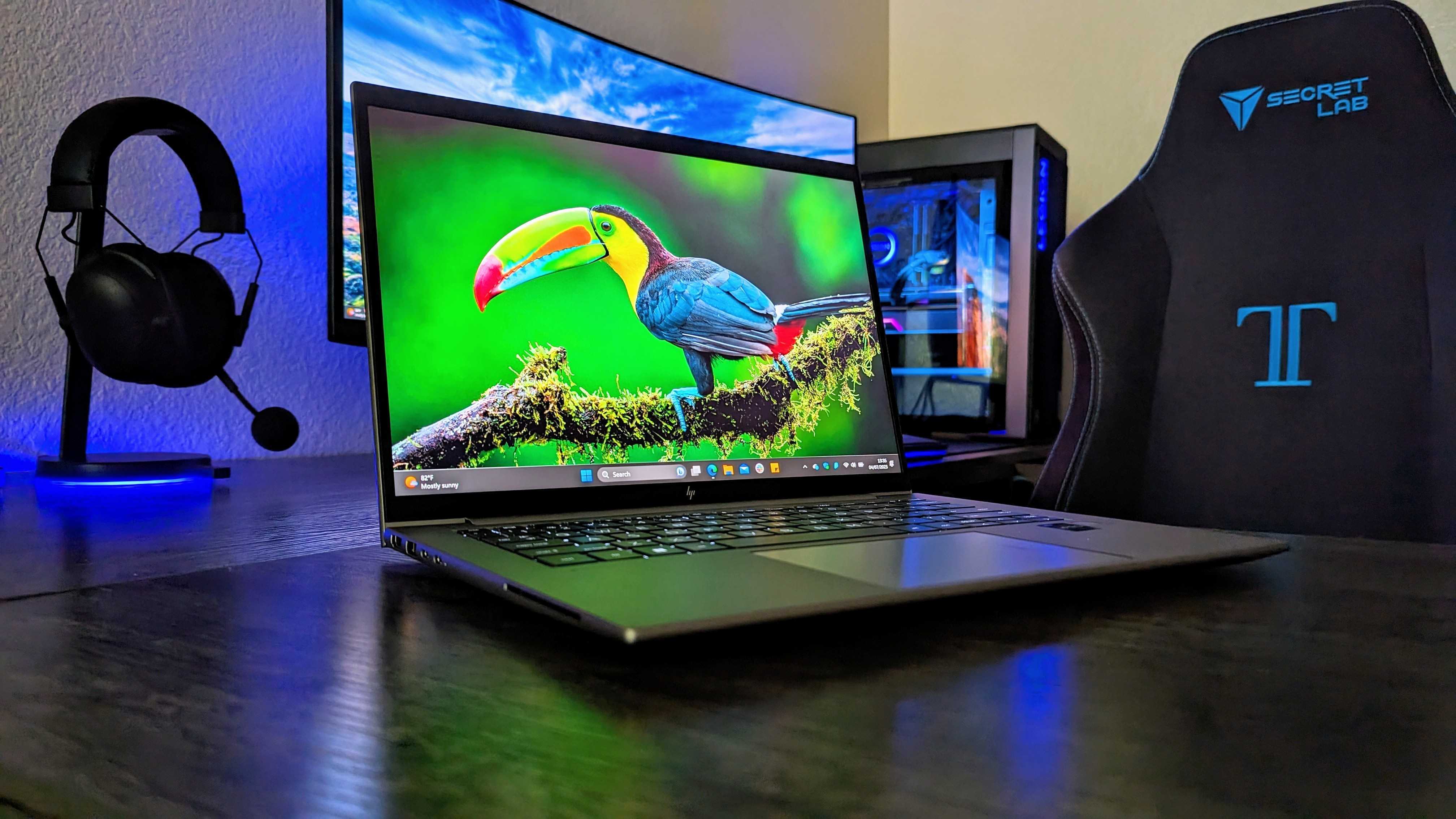
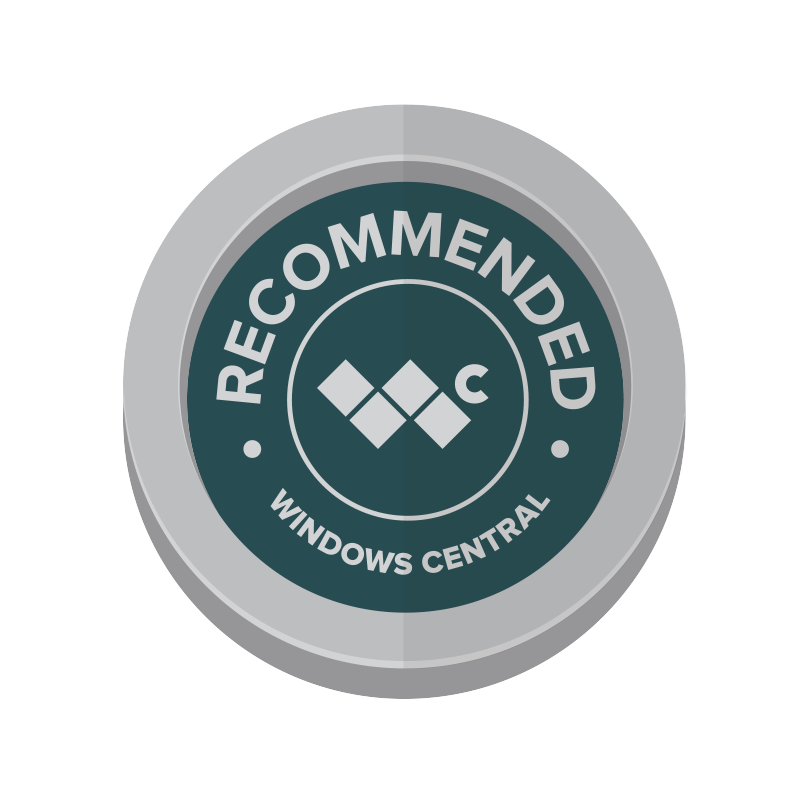
Specifications
Reasons to buy
Reasons to avoid
Professionals searching for a laptop with enterprise-level features, strong performance, and extra security will usually lean toward a mobile workstation.
HP's ZBook Firefly 14 (G11) is one of the more compact options on the market, acting as a great entry point for those who don't need a ton of extra power (at least compared to the oversized workstations that can rival desktop PCs).
HP's thinnest and lightest workstation offers up to an Intel Core Ultra 7 165H vPro CPU, NVIDIA RTX A500 discrete GPU, up to 64GB of DDR5-5600MHz RAM that can be upgraded after purchase, and up to 2TB of M.2 PCIe 4.0 NVMe storage that can also be upgraded.
In their HP ZBook Firefly 14 (G10) review, Windows Central's Zach Boddy highlighted the QHD+ DreamColor display with an anti-glare finish that came with their review unit, noting:
"A 100% brightness of 542 nits makes the Firefly 14" easy to use even in sunlight, but it gets dim enough to use in near blackness, too. A taller 16:10 aspect ratio makes this laptop great for productivity and makes the 14 inches feel more spacious."
While the G10 model has now been discontinued, the new G11 model is available in many different configurations. It seems like HP mostly did a performance refresh for this generation, meaning you still get a thin build, excellent keyboard, and plenty of security features.
👀 Read our full HP ZBook Firefly 14 (G10) review
Honorable mentions


Don't see what you need in the list above? No problem; here's an honorable mention with a different focus from the rest of the best laptops with bright screens.
- Panasonic Toughbook 55 Mk3: The Toughbook lineup is all about ruggedness and upgradeability, and the 55 Mk3 model's focus on field work means it comes with a 14-inch display capable of up to 1,000 nits brightness. If you need a laptop that will survive the apocalypse, I recommend checking this one out. 👉 Read the full Panasonic Toughbook 55 Mk3 review

I've been reviewing laptops since 2016, and my remote work experience has led me to seek out laptops with bright screens so that I'm not stuck to my desk. My knowledge of display tech and the excellent reviews by the Windows Central team make it easy to recommend the best laptops with bright screens.
How we test laptops at Windows Central

Every laptop that we test at Windows Central goes through a similar process.
The display is analyzed using a colorimeter — usually a SpyderX Pro — to determine its minimum and maximum brightness levels. This little tool also checks for color gamut reproduction.
Because laptop makers usually give a general number for brightness, this tool is invaluable when it comes to putting together a guide for the best laptops with bright screens.
Of course, the display isn't the only area we focus on.
Everything from design, build quality, camera, speakers, keyboard, touchpad, and ports are tested and critiqued. Because we "adopt" the laptop we're reviewing, we can offer real-world feedback in these areas.
For performance hardware, we use a collection of synthetic benchmarking tools — PCMark, Geekbench, Cinebench, CrossMark, 3DMark, CrystalDiskMark, and more — to help compare the laptop in question to others we've recently reviewed.
Battery life is judged using real-world time spent with the laptop, averages pulled from the Windows battery report, and focused benchmarking tools. Together, these methods offer a clear idea of what you can expect when it comes to runtimes.
How to choose the best laptop with a bright screen
The average laptop on the market today usually includes a screen that sits somewhere around 300 to 350 nits of brightness.
Many modern laptops fall even lower than that, especially if you're shopping for a budget option, sitting somewhere between 250 and 300 nits. We test every laptop with a colorimeter, which accurately reports the real-world brightness of any screen.
While anywhere from 250 to 350 nits of brightness can get the job done when you're indoors (albeit with some glare from time to time, depending on the screen's finish), you might want extra brightness to help with working outdoors.
That's where a laptop with at least 400 nits (as the bare minimum) should be considered; anything more provides an even easier view when you're working under harsh or bright lighting.
Lenovo's Yoga Slim 7x (Gen 9) is one of the best laptops we've tested in the last year, with the right hardware and features to accommodate creators. It also happens to have an OLED touch display with up to 1,000 nits brightness, 90Hz refresh rate, and excellent color reproduction. It's available for about $1,200, but there have been frequent sales since its launch.
There's also the Lenovo Yoga Slim 9i 14 (Gen 10) for those who want to push the resolution to 4K while holding onto about 750 nits brightness with HDR enabled.
For a more portable and versatile PC, Microsoft's Surface Pro 11 brings a 13-inch touch display with a 120Hz refresh rate and up to 900 nits brightness with HDR and Dolby Vision enabled. It's an all-around winner, but its screen improvements earned it a place on this list.
And if you're a gamer who enjoys their favorite titles outdoors, Lenovo's Legion 9i is a monster gaming laptop with the performance required to play modern titles at max settings. The 16-inch mini-LED screen has a 3200x2000 resolution, 165Hz refresh rate, and 1,200 nits brightness with 1,536 dimming zones for outstanding contrast and brightness control.
Does a screen's finish also make a difference?
Modern laptop screens usually come with either an anti-glare (matte), glossy, or anti-reflective finish. No matter how many nits of brightness the screen can offer, these finishes will have a different effect on your view.
A glossy screen will show the most glare and is usually tied into a touch display with a glass cover. Anti-reflective tech started popping up more frequently a few years ago, and it's a great way for glass screens to show dimmer glare.
Anti-glare (usually also called matte) displays are often used in business laptops with non-touch displays. Matte displays can still show glare, and they're not great for watching movies or graphical work.
Anti-reflective is really the best option, especially as laptops continue to blur the lines between work, creativity, and home use. You get to keep the clean look of the anti-reflective layer, and you get improved glare reduction even before taking brightness into account.
Get the Windows Central Newsletter
All the latest news, reviews, and guides for Windows and Xbox diehards.

Cale Hunt brings to Windows Central more than eight years of experience writing about laptops, PCs, accessories, games, and beyond. If it runs Windows or in some way complements the hardware, there’s a good chance he knows about it, has written about it, or is already busy testing it.
- Ben WilsonSenior Editor
